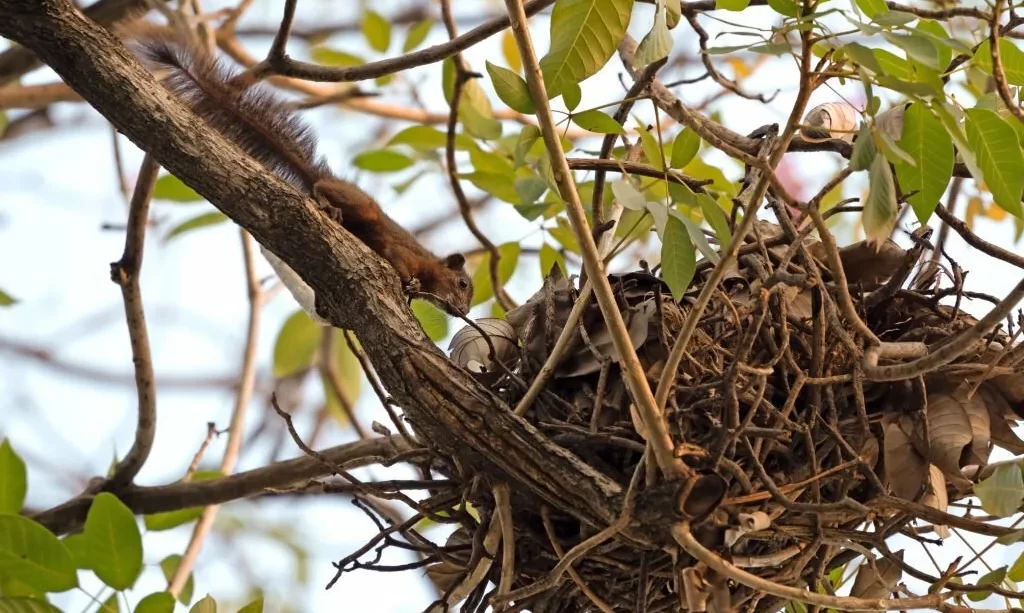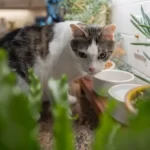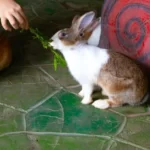The sight of a squirrel’s nest nestled high in a tree is a common occurrence, offering a glimpse into the natural world that coexists with our urban and suburban landscapes. As homeowners, it’s not uncommon to wonder about the presence of squirrel nests and whether they should be removed. However, this decision requires careful consideration, taking into account various factors to ensure the well-being of both the squirrels and the homeowners. In this guide, we’ll explore the considerations involved in deciding whether to remove a squirrel nest from a tree, diving into the types of nests, legal aspects, and other crucial factors that influence this decision.
Types of Squirrel Nests
Understanding the types of nests squirrels build is essential in determining the impact of potential removal. Squirrels create two main types of nests: dreys and leaf nests. Dreys are elaborate structures made of twigs, leaves, and other materials, typically situated in the branches of trees. On the other hand, leaf nests are simpler constructions made of leaves and are often found in the forks of tree branches. Each type serves specific purposes, and recognizing them provides insight into the role the nest plays in the squirrel’s life.
Legal Considerations
Before contemplating the removal of a squirrel nest, it’s crucial to be aware of legal considerations surrounding wildlife and habitat protection. Many regions have regulations in place to safeguard wildlife, including squirrels, and removing nests may be subject to legal restrictions. Researching and understanding local wildlife protection laws is paramount. Consulting with local authorities or wildlife agencies can provide clarity on the legalities involved and ensure compliance with regulations designed to preserve the delicate balance between human habitats and the natural environment.
Seasonal Considerations
The timing of considering nest removal is crucial and should align with the natural behavior of squirrels. Squirrels typically breed in late winter and early spring, with females seeking secure locations for nesting. Disturbing a nest during these seasons can have significant consequences, potentially leaving young, vulnerable squirrels without proper care. It is advisable to avoid nest removal during breeding seasons to minimize disruption and ensure the well-being of both adult squirrels and their offspring.
Reasons for Nest Removal
Several reasons might prompt homeowners to contemplate the removal of a squirrel nest. These include concerns about property damage, potential health risks, or a desire to prevent future nests. While these concerns are valid, it’s essential to carefully assess the situation. Squirrels play a vital role in ecosystems, and removing their nests should be approached with caution. Understanding the specific reasons for considering removal allows homeowners to explore alternative solutions that address concerns without causing harm to the wildlife.
Risks and Consequences
Removing a squirrel nest carries inherent risks and consequences. It can lead to stress for the squirrels, disruption of their natural behaviors, and potential harm to young, dependent offspring. Additionally, attempting to remove a nest without proper knowledge and precautions may result in injury to both humans and squirrels. Furthermore, removing nests may not necessarily solve the underlying issues, as squirrels may rebuild in the same or nearby location. Considering the risks and potential consequences is vital in making an informed decision that prioritizes the welfare of wildlife and minimizes negative impacts on the local ecosystem.
Alternatives to Nest Removal
Rather than resorting to nest removal, there are alternative approaches that allow homeowners to address concerns while respecting the natural behaviors of squirrels. Using deterrents, such as noise or motion-activated devices, can discourage squirrels from nesting in specific areas without causing harm. Additionally, securing entry points to attics or other potential nesting sites can prevent squirrels from entering homes. By exploring these alternatives, homeowners can mitigate concerns without resorting to nest removal, fostering a coexistence that benefits both humans and squirrels.
Expert Consultation
When faced with the decision of whether to remove a squirrel nest, seeking expert consultation is invaluable. Wildlife experts and local animal control authorities possess the knowledge and experience to assess the situation objectively. Their expertise allows them to offer guidance on the best course of action, considering the specific circumstances and local regulations. Consulting with professionals ensures that decisions align with ethical and legal considerations, promoting a harmonious relationship between humans and wildlife.
Conclusion
Deciding whether to remove a squirrel nest from a tree requires a thoughtful and informed approach. By understanding the types of nests, legal considerations, and seasonal factors, homeowners can make decisions that prioritize the well-being of both squirrels and themselves. Alternatives to nest removal and expert consultation offer pathways to address concerns without causing harm to wildlife. Ultimately, a balanced coexistence with squirrels is not only possible but also contributes to the preservation of local ecosystems. As stewards of our environments, let us make decisions that foster harmony with the natural world around us.



